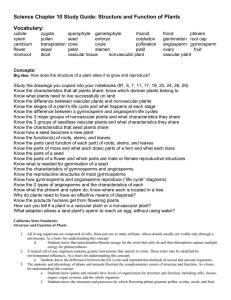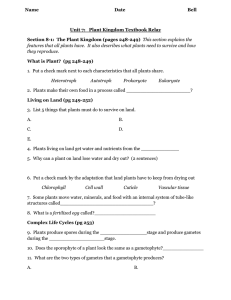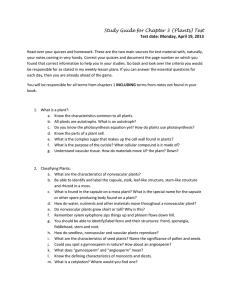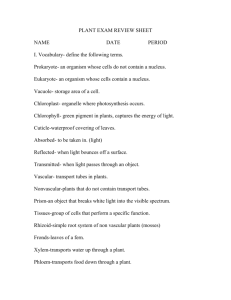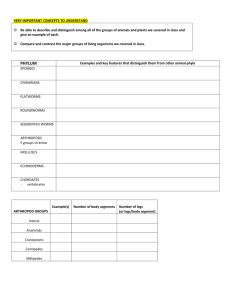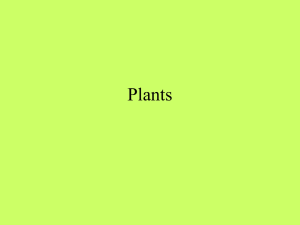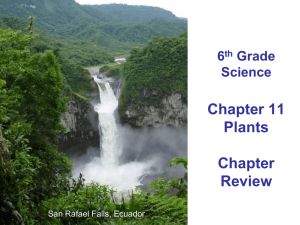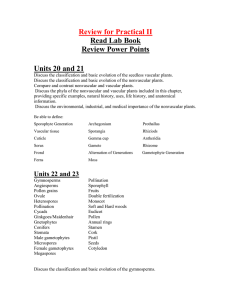Chapter 8 Questions—Plants Section 8.1—What is a Plant?
advertisement
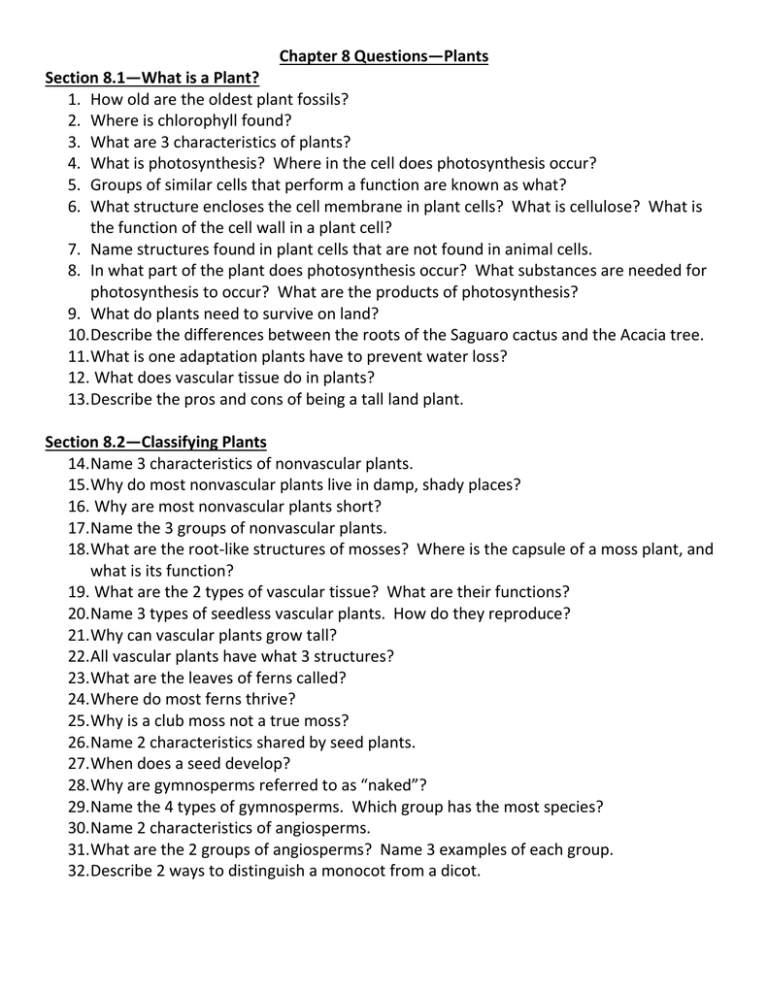
Chapter 8 Questions—Plants Section 8.1—What is a Plant? 1. How old are the oldest plant fossils? 2. Where is chlorophyll found? 3. What are 3 characteristics of plants? 4. What is photosynthesis? Where in the cell does photosynthesis occur? 5. Groups of similar cells that perform a function are known as what? 6. What structure encloses the cell membrane in plant cells? What is cellulose? What is the function of the cell wall in a plant cell? 7. Name structures found in plant cells that are not found in animal cells. 8. In what part of the plant does photosynthesis occur? What substances are needed for photosynthesis to occur? What are the products of photosynthesis? 9. What do plants need to survive on land? 10.Describe the differences between the roots of the Saguaro cactus and the Acacia tree. 11.What is one adaptation plants have to prevent water loss? 12. What does vascular tissue do in plants? 13.Describe the pros and cons of being a tall land plant. Section 8.2—Classifying Plants 14.Name 3 characteristics of nonvascular plants. 15.Why do most nonvascular plants live in damp, shady places? 16. Why are most nonvascular plants short? 17.Name the 3 groups of nonvascular plants. 18.What are the root-like structures of mosses? Where is the capsule of a moss plant, and what is its function? 19. What are the 2 types of vascular tissue? What are their functions? 20.Name 3 types of seedless vascular plants. How do they reproduce? 21.Why can vascular plants grow tall? 22.All vascular plants have what 3 structures? 23.What are the leaves of ferns called? 24.Where do most ferns thrive? 25.Why is a club moss not a true moss? 26.Name 2 characteristics shared by seed plants. 27.When does a seed develop? 28.Why are gymnosperms referred to as “naked”? 29.Name the 4 types of gymnosperms. Which group has the most species? 30.Name 2 characteristics of angiosperms. 31.What are the 2 groups of angiosperms? Name 3 examples of each group. 32.Describe 2 ways to distinguish a monocot from a dicot. Section 8.3—Plant Structures 33. Name the 3 main functions of roots. 34. Name the 2 main types of root systems. 35.Why is the root cap important? 36.What are the functions of the root hairs? 37.What do xylem and phloem do? 38.What are the functions of a stem? 39.What are the 2 types of stems? What does the cambium do? 40.What are annual rings made of? What can we learn by examining the annual rings? 41.What is the main function of leaves? 42.Where are the stomata mainly found? What do they do? What opens and closes the stomata? 43.What is one way plants can slow down transpiration? 44.What are the 3 main pars of a seed? What does the seed coat do? 45.Name 4 methods of seed dispersal. 46. How does the seed germinate? 47.What is a flower? What is the function of the petals? 48. What is the male part of a flower called? What structures make it up? 49. What is the female part of the flower called? What structures does it include? What does the ovary contain? 50.Name 4 types of pollinators. Section 8.4—Plant Reproduction 51.Describe the 2 stages of a plant’s life cycle. 52. Describe how angiosperms are classified according to the length of their life cycle. 53.What happens during fertilization? What is a zygote? 54.How can plants reproduce asexually? 55.Why must mosses and ferns grow in moist environments? 56.What are the reproductive structures in gymnosperms? 57.What male part of the angiosperm produces pollen? What is the purpose of the stigma? 58.The pollen grain produces a ________ _______ that grows into the ovule. A sperm cell moves through the pollen tube and fertilizes the _____ _____. 59.What does the ovule become? What does the ovary become? 60.What is the purpose of the fruit? Section 8.5—Plant Responses and Growth 61. In terms of direction of growth, what are the 2 types of tropisms? 62. What is thigmotropism? Gravitropism? Phototropism? 63.What is photoperiodism? 64.Why is dormancy beneficial to a plant? 65.Why do the leaves of some trees change color in autumn?
